Technical SEO is an essential component of any successful SEO strategy. It focuses on optimizing the infrastructure of your website to make it easier for search engines to crawl, index, and understand your content. By ensuring that your website is technically sound, you can improve your search engine rankings, user experience, and overall website performance. Here’s a comprehensive technical SEO checklist to help you cover all the crucial aspects.
The Importance of Technical SEO
Technical SEO involves optimizing the backend structure and foundation of your website. It ensures that your site is accessible, fast, and user-friendly, which are all critical factors for search engines. By addressing technical SEO issues, you can prevent potential problems that could hinder your site’s performance and visibility in search results.
Benefits of Using a Technical SEO Checklist
- Improved Crawlability: Ensures search engines can access and index your website efficiently.
- Enhanced User Experience: Provides a faster, more secure, and user-friendly experience for visitors.
- Higher Rankings: Addresses technical issues that can impact search engine rankings.
- Increased Traffic: By improving your site’s technical foundation, you attract more organic traffic.
- Competitive Advantage: Staying on top of technical SEO trends helps you stay ahead of competitors.
| Task | Description | Tools | How to Use | Benefit |
|---|---|---|---|---|
| XML Sitemap | Create and submit an XML sitemap to search engines. | Yoast SEO, Google Search Console | Generate sitemap with Yoast SEO and submit via Google Search Console. | Improve crawlability and indexing. |
| Robots.txt | Optimize the robots.txt file to control search engine crawlers. | Google Search Console, Screaming Frog | Edit robots.txt file via Google Search Console or your site’s root directory. | Manage crawler access to site resources. |
| HTTPS Implementation | Ensure the site is served over HTTPS. | SSL Certificates, Let’s Encrypt | Obtain and install SSL certificate from Let’s Encrypt or your hosting provider. | Secure data and improve rankings. |
| Canonical Tags | Use canonical tags to prevent duplicate content issues. | Yoast SEO, SEMrush, Ahrefs | Add canonical tags in Yoast SEO or manually in HTML. | Consolidate duplicate content signals. |
| 404 Error Pages | Create custom 404 error pages. | Google Analytics, Screaming Frog | Create a custom 404 page in your CMS or theme settings. | Improve user experience and reduce bounce rates. |
| Site Architecture | Ensure a logical, flat site structure. | Screaming Frog, Sitebulb | Use Screaming Frog to visualize and flatten your site’s structure. | Improve crawlability and user navigation. |
| Breadcrumbs | Implement breadcrumb navigation. | Yoast SEO, Schema Markup | Enable breadcrumbs in Yoast SEO or add schema markup manually. | Enhance user navigation and SEO. |
| Structured Data | Use schema markup for rich snippets. | Google Structured Data Helper, Schema Pro | Implement structured data via Google Structured Data Helper or Schema Pro plugin. | Enhance search result visibility. |
| Page Speed | Optimize site speed for both desktop and mobile. | Google PageSpeed Insights, GTmetrix | Analyze with Google PageSpeed Insights and implement recommendations. | Improve user experience and rankings. |
| Mobile-Friendliness | Ensure the site is optimized for mobile devices. | Google Mobile-Friendly Test, Lighthouse | Test with Google Mobile-Friendly Test and optimize based on feedback. | Enhance mobile user experience and SEO. |
| Crawl Errors | Monitor and fix crawl errors. | Google Search Console, Screaming Frog | Use Google Search Console to identify and fix crawl errors. | Ensure all pages are accessible to crawlers. |
| Duplicate Content | Identify and resolve duplicate content issues. | Copyscape, Siteliner | Scan for duplicates with Copyscape and consolidate or remove. | Prevent dilution of ranking signals. |
| AMP Implementation | Implement Accelerated Mobile Pages (AMP). | AMP Project, Google AMP Test | Implement AMP through the AMP Project guidelines and validate with Google AMP Test. | Improve mobile page speed and user experience. |
| Log File Analysis | Analyze server log files for crawler behavior. | Screaming Frog Log Analyzer, Botify | Use Screaming Frog Log Analyzer to analyze and optimize server logs. | Understand and optimize crawler access. |
| Broken Links | Identify and fix broken links. | Screaming Frog, Ahrefs, Moz | Detect broken links with Screaming Frog and fix or redirect them. | Improve user experience and SEO. |
| Redirects | Set up proper redirects for moved or deleted pages. | Redirection, Yoast SEO | Manage redirects with the Redirection plugin or Yoast SEO. | Maintain link equity and user experience. |
| HTTP/2 Implementation | Upgrade to HTTP/2 for better performance. | Web hosting services, CDN providers | Contact your hosting provider to enable HTTP/2. | Improve site speed and performance. |
| Image Optimization | Compress and optimize images. | TinyPNG, ImageOptim, Smush | Compress images with TinyPNG or Smush plugins. | Improve page load speed. |
| Browser Caching | Enable browser caching to speed up loading times. | W3 Total Cache, WP Rocket | Enable caching with W3 Total Cache or WP Rocket plugins. | Reduce load times for returning visitors. |
| Minify CSS and JavaScript | Minify CSS and JavaScript files to reduce file size. | UglifyJS, CSSNano, WP Rocket | Minify files using UglifyJS or WP Rocket plugin. | Improve site speed and performance. |
| CDN Integration | Use a Content Delivery Network (CDN) to serve static content. | Cloudflare, Amazon CloudFront | Integrate CDN through Cloudflare or Amazon CloudFront. | Improve load times and global reach. |
| Database Optimization | Regularly clean and optimize your database. | WP-Optimize, WP Rocket | Optimize your database using WP-Optimize plugin. | Improve site speed and performance. |
| Error Monitoring | Monitor and fix site errors. | Google Search Console, Pingdom | Use Google Search Console to monitor and address errors. | Ensure a smooth and error-free user experience. |
| Hreflang Implementation | Implement hreflang tags for multilingual sites. | Yoast SEO, SEMrush, Google Search Console | Add hreflang tags in Yoast SEO or manually in the HTML. | Improve search engine understanding of language targeting. |
| Server Response Time | Reduce server response time. | Google PageSpeed Insights, GTmetrix | Optimize server performance using insights from PageSpeed or GTmetrix. | Improve page load speed. |
| Canonicalization | Ensure proper canonicalization of your website. | Yoast SEO, SEMrush, Ahrefs | Set up canonical tags using Yoast SEO or in HTML headers. | Prevent duplicate content issues. |
| Pagination | Implement proper pagination for large sets of data. | Yoast SEO, All in One SEO Pack | Configure pagination in Yoast SEO or All in One SEO Pack. | Improve crawlability and user experience. |
| SSL Certificate | Ensure your SSL certificate is correctly installed. | SSL Labs, Let’s Encrypt | Verify SSL installation with SSL Labs or obtain from Let’s Encrypt. | Secure data and improve trustworthiness. |
| Content Delivery | Use a CDN to distribute content globally. | Cloudflare, Akamai, Amazon CloudFront | Set up a CDN with providers like Cloudflare or Akamai. | Improve load times and global reach. |
| Error Pages | Create custom error pages (403, 404, 500). | WordPress plugins, custom HTML | Design custom error pages via your CMS or custom HTML. | Enhance user experience during errors. |
| Plugin Management | Regularly update and manage plugins. | WordPress Dashboard, ManageWP | Use WordPress Dashboard or ManageWP to keep plugins updated. | Ensure site security and performance. |
| Security Measures | Implement security measures to protect your site. | Wordfence, Sucuri, iThemes Security | Install and configure security plugins like Wordfence or Sucuri. | Protect your site from attacks and vulnerabilities. |
By following this comprehensive technical SEO checklist, you can ensure that your website is well-optimized for search engines and provides a superior user experience. Addressing these technical aspects will help improve your search engine rankings, increase organic traffic, and maintain a healthy and efficient website. Implement these tasks systematically, and you’ll be well on your way to achieving SEO success and staying ahead of the competition.





